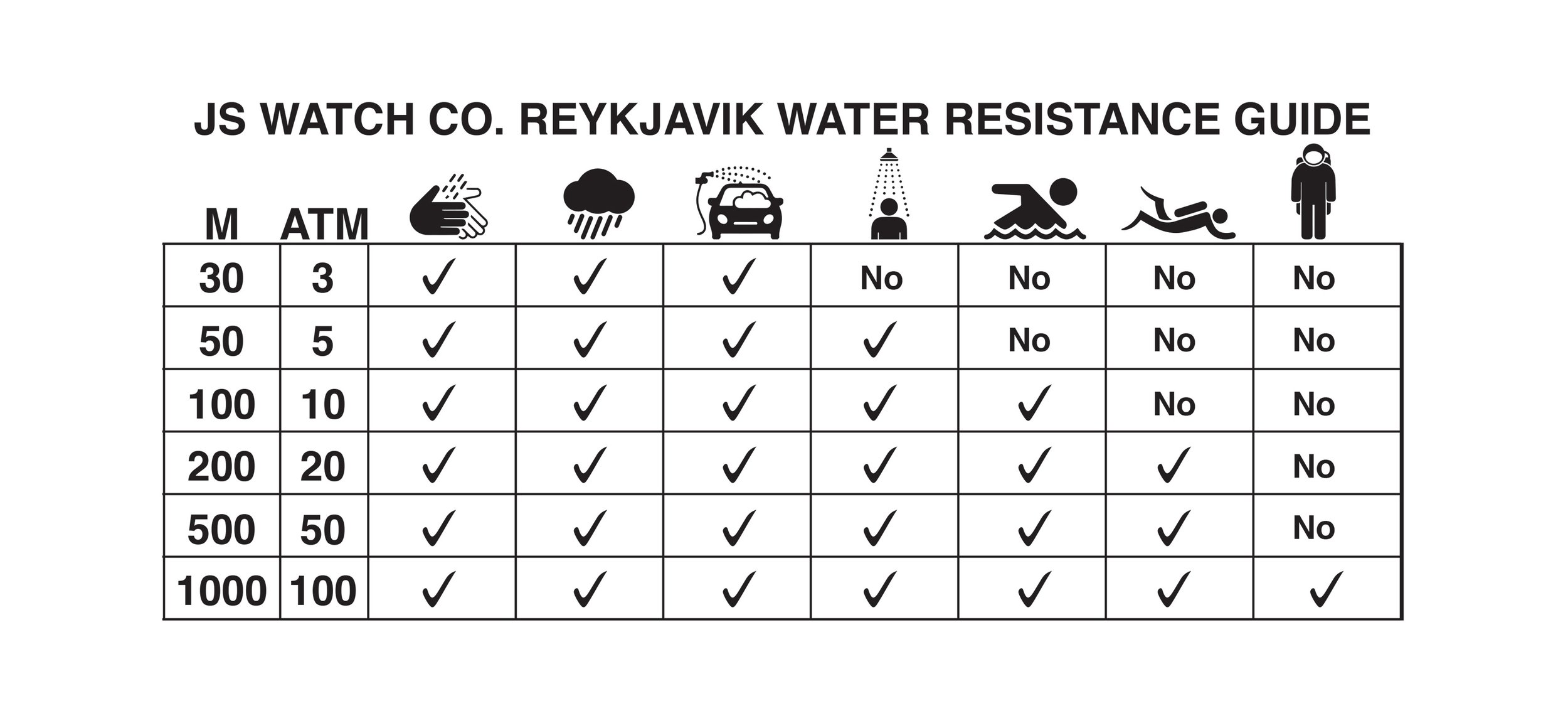
Water Resistance Guide
Water resistance is stated as a depth ( ATM or Meters ) this means that it has been tested in a laboratory to with stand a static pressure for a short period only at the stated depth. The actual water pressure on the watch during use is greater than the static pressure. During diving into a pool the pressure on the watch is greater at the impact point with the water.
Water Resistance Guide
The indication of "50 meters" on a watch's dial or case back doesn't signify that it's suitable for diving to a depth of 50 meters. This rating pertains to its static pressure endurance. When a watch is in motion underwater, as in swimming, the pressure on the watch varies, which might lead to seal failure and water ingress. Most water-resistant watches aren't meant for prolonged active use in water.
For swimming and diving, a specific range of watches is clearly labeled as 200 - 1000M. This designation implies they're rated for underwater use and come with additional durability and legibility criteria tailored for such scenarios. These watches are equipped with a screw-down crown.
When using the watch around water, avoid pulling out the crown to adjust the time or press pushers. If the watch has a screw-down crown and pushers, make sure they are securely closed before submerging the watch. Keep in mind that water exposure could affect the longevity of a leather strap, so it's best to avoid it.
Water resistance is expressed as a depth (ATM or meters). This means it has been tested in a controlled setting to endure static pressure for a brief period at the stated depth. The actual water pressure during real use surpasses the static pressure. For instance, during diving into a pool, the pressure on the watch is greater upon impact with the water.
Certain substances in water, as well as perfumes, aerosol sprays, and other cosmetics, can damage the watch seal.
It's advisable to test watches for water resistance every two years and replace gaskets as needed to maintain water resistance.
Water Resistance Chart
3 ATM, 30m, 100ft: Suitable for everyday use. Can withstand accidental splashes but not suitable for swimming.
5 ATM, 50m, 165ft: Suitable for everyday use and bathing but not for swimming.
10 ATM, 100m, 330ft: Suitable for everyday use, swimming, and snorkeling but not for high board diving or sub-aqua diving.
20 ATM, 200m, 660ft: Suitable for all high-impact water sports and scuba diving at depths not requiring helium gas. Deeper depths warrant professional-grade watches.
20 - 50 ATM, 200 - 500m: Suitable for all high-impact water sports, scuba diving, and saturation diving.
100 ATM, 1000m: Suitable for deep-sea diving and intergalactic travels.
Note on Water Resistance: While the Vínland Chronograph collection is rated at 10ATM, making it suitable for swimming and snorkeling, it's essential to avoid pressing the pushers when the watch is underwater or even when it's wet. Pressing the pushers can compromise the water resistance. After swimming or getting the watch wet, always dry it off thoroughly. And as always, ensure the crown and pushers are securely in place before submerging.
